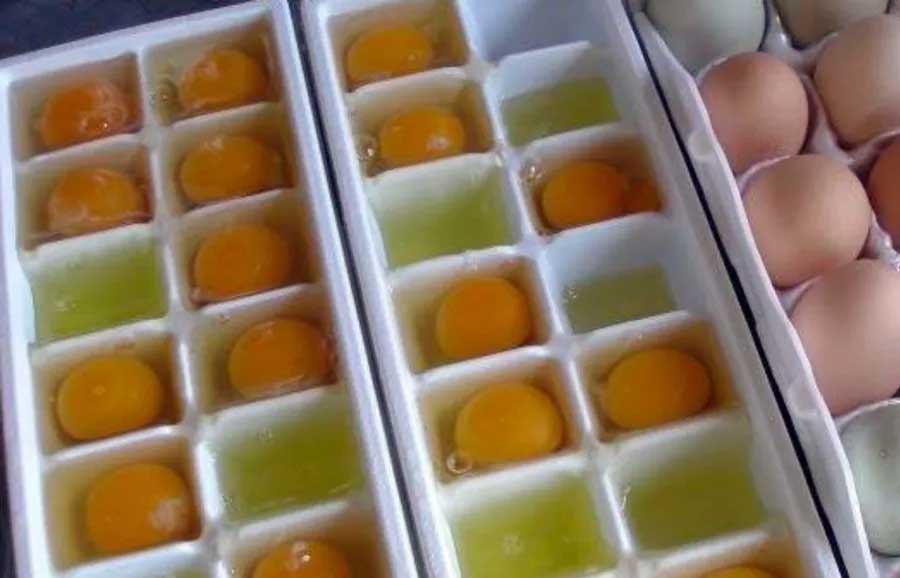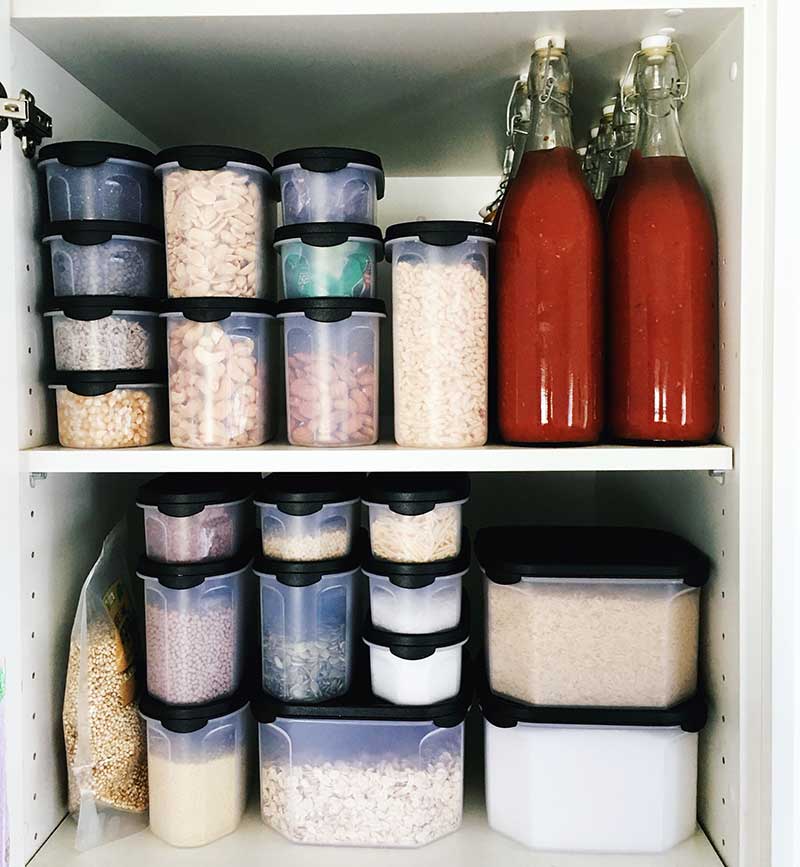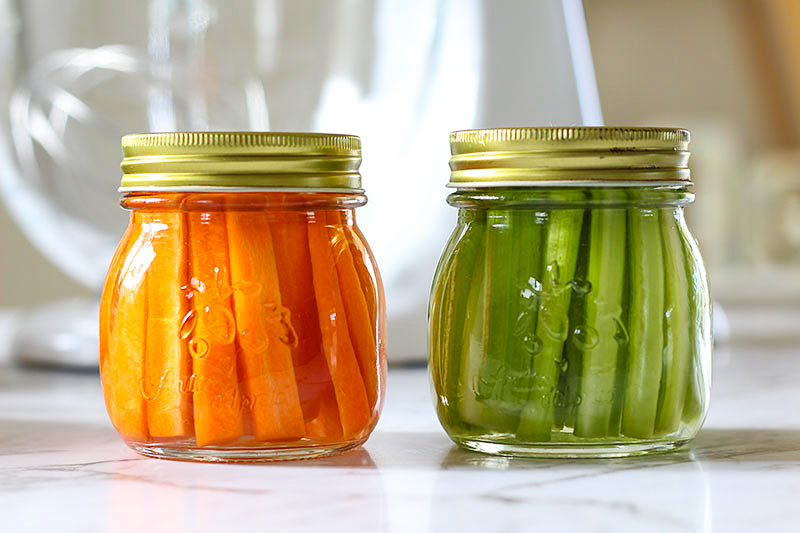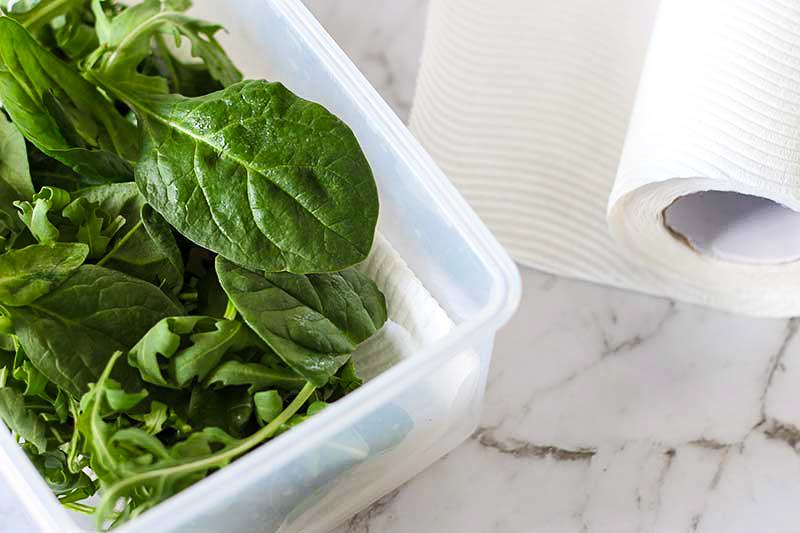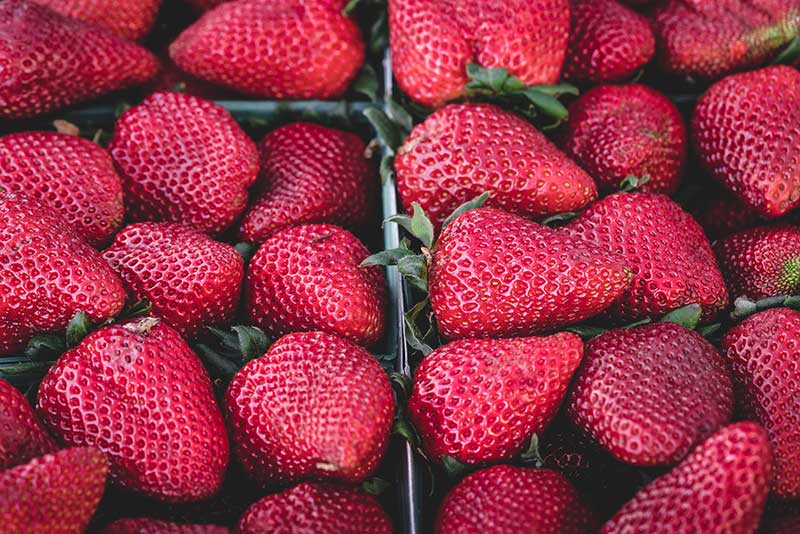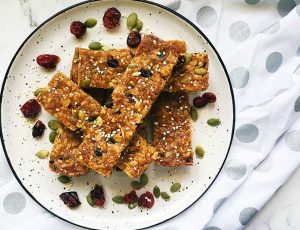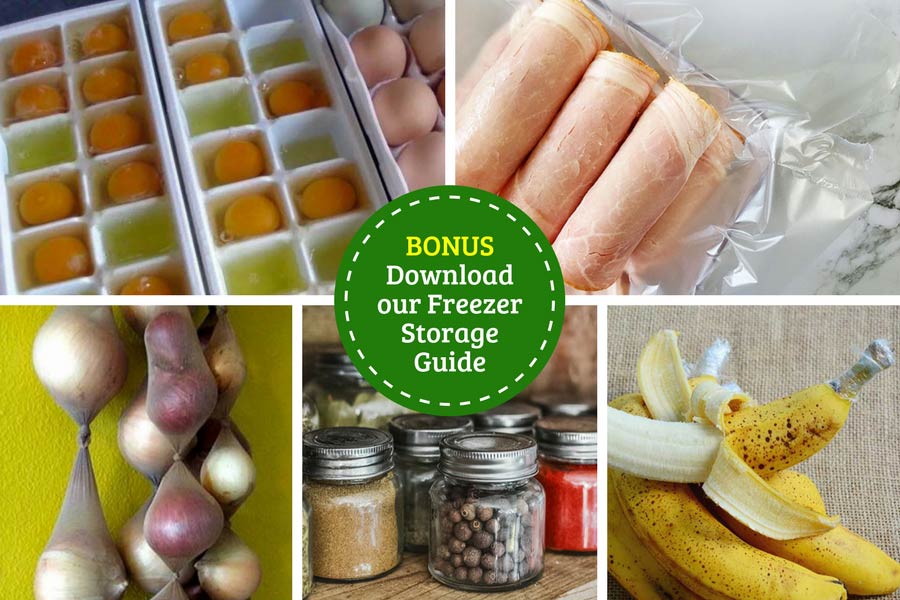
Food Storage Hacks: 32 Ways to Keep Your Groceries Fresh for Longer
You stuck to the list, avoided a confectionery aisle meltdown and made it home without any grocery bags splitting. High five yourself, you’re winning at life at this point.
But what happens when you get home and go to put your groceries away?
Here’s 32 clever tips and tricks on keeping your food fresher for longer, and getting the very most out of your grocery dollar!
Woolworths has you covered for ALL your food saving tips with Food Savers, a series of clever tips designed to help you waste less and save more. We’re kicking off with the best guide ever to freezing food! Then make sure to keep on reading for more brilliant fresh food storage hacks!
Check out even more Food Saver tricks and tips here.
1. Handy Guide to Freezing Food – Pin it, share it or save it!
Turn your freezer into a mini pantry by freezing foods such as meats, veggies, cakes and more.
Here’s our handy guide to getting the best out of your freezer (and your food)!

2. Bread
Bread should be stored in a cupboard or bread bin – if it’s left on a warm sunny bench it will soon start to sweat and become a haven for mould. Alternatively, freeze it and take out slices as they’re needed and it will always be fresh!
Got a pile of stale bread? Whiz it into breadcrumbs using your food processor and freeze them.
3. Eggs
Not going to eat those eggs before their use by date? Get out your trusty ice cube tray and break an egg into each ice cube cavity and freeze for up to 12 months. Run the base under water for a bit to loosen and flip them out into a container. Defrost in the fridge as needed. MIND BLOWN.
4. Brown sugar
Brown sugar easily becomes rock hard if exposed to air for a long time. Don’t throw it out, add a slice of bread to the container, leave it for a few days and just like magic – soft sugar again.
5. Pantry Storage Tip 101
Keep pantry moths, ants, weevils and other creepy crawlies away by decanting flours, rice, and other packets typically not sealed properly once opened into airtight containers.
6. Cereal
A fab hack for next time the kids leave the box of Cornflakes open. Give the stale cereal a quick toast in the oven to crisp up, whiz them around the food processor to make super crunchy crumbs, taking your chicken dinners to next level!
7. Spices
No one likes tasteless spices. Spices are best kept in a cool, dark cupboard. Keep opened packets in individual airtight containers (or easy peasy and affordable zip lock bags) for them to keep their flavour and colour longer.
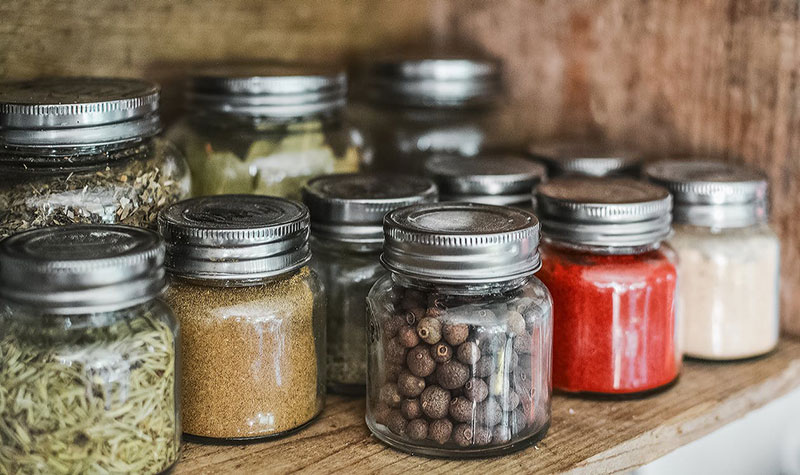
8. Liquid Stock
Much the same as coconut milk, stock can be saved by the same method. Fill that ice cube tray, pop them out and bag ’em up. Just don’t forget to label the bag!
9. Ginger and Kaffir Lime Leaves
Both fresh ginger and kaffir lime leaves can be frozen in airtight, ziplock bags. Just grate that frozen ginger straight into your next stir fry, simple!
10. Spring Onions
I’m forever losing half bunches of spring onions, dying a slow, dehydrated death in the back of the fridge. BUT NO MORE with this clever hack. Slice spring onions, tip them into a clean plastic bottle and freeze them. Next time a stir fry calls for spring onions, shake them in from the bottle. So easy!
11. Asparagus, Spring Onions, Coriander and Parsley
These guys all love to have wet feet. Stand them up in a jug with about 5cm of water in the bottom – a fancy edible bouquet in your fridge if you like.
12. Potatoes
Potatoes are a great, budget friendly tummy filler but if they’re exposed to light, the skins will soon turn green and become inedible. Store them in a dry, dark spot (the laundry is often a fab place for spuds) and throw an apple in the bag to prevent sprouting.
13. Onions
A clean pair of stockings is all you need to store your onions fresh for weeks, even months. Pop an onion in the stocking foot, tie a knot and add another, and repeat. Hang in a dark, cool place for maximum freshness.
14. Avocado
A squeeze of fresh lemon juice and tightly wrapped in plastic wrap will lessen the browning of a cut avocado. Store unripe avocados at room temperature.
In general it takes between 4-7 days for a hard avocado to fully ripen.
If you have fully ripened avocados you don’t want to use straight away, pop them in a plastic bag in the fridge and they’ll keep for another 3-5 days.
15. Snacks at the Ready
By cutting carrots and celery into sticks, keeping them in jars of water in the fridge, not only are they fresher for longer, you also have snacks at any given moment. Pass the hummus please! You can also cut capsicum into slices, broccoli and cauliflower into florets days in advance for easy quick steaming or stir-fry.
16. Tomatoes
No one likes a soft tomato. Keep your toms in peak condition by storing them at room temperature, stem side down. HOWEVER, if you buy vine ripened tomatoes, store them upright and don’t remove their vine stem until you use them!
17. Salad Leaves
Excess moisture is the devil with salad leaves, causing premature wilting. A neat trick to prolong salad leaves is to empty the bag into an airtight container with a piece of kitchen paper towel on the bottom. If you have a surplus of baby spinach leaves, pat them dry and pop them into a freezer bag and into the freezer. You can then add them to smoothies and pasta dishes.
18. Lettuce
If your lettuce is looking a little lacklustre and limp, give the leaves a quick dunk in an ice bath. A minute or two in a bowl of icy cold water will revive them nicely.
19. Celery
No more flexible, bendy celery! Wrap a whole celery tightly in foil and keep it in the fridge. You’ll have stiff, peanut butter dipping quality celery for weeks.
20. Fruit in the Fridge – Yes or No?
Depends. Melons – yes, tomatoes – no. Contrary to popular belief, NOT EVERYTHING is better off stored in the fridge.
Apples, apricots, rockmelon, honeydew and fresh figs all belong in the fridge.
While avocados, bananas, nectarines, peaches, pears, plums and tomatoes are much more sensitive to being chilled so should be kept in a bowl on the kitchen bench
21. How to Speed up the Ripening of Fruit
Have a nectarine with the same firmness of a cricket ball or perhaps your toddler prefers much softer pears? Granted, it’s not an instant fix, but you CAN accelerate the ripening process by placing the unripe offender in a paper bag with an apple or banana, folding the top over. Don’t forget to check it daily!
22. Berries
At the height of berry season, it’s easy to buy more than what you’ll eat straight away. Strengthen their shelf life by giving berries a quick dip in a bowl containing 1 part vinegar to 3 parts water, drying them off completely and storing a clean, paper towel lined container. Berries which start to go soft don’t need to tossed – pop them in the freezer for smoothies or baking.
23. Pineapple
Packing a powerful healthy punch of bromelain, wedges of fresh pineapple will last a week when stored in an airtight container in the fridge. There’s plenty of pineapple myths lurking, but I can vouch for tipping the whole fruit upside down on its head for an hour before cutting for an even sweeter first bite!
24. Bananas
If a bunch of bananas isn’t gobbled up within a day or two in your home, slow down the ripening process by tightly wrapping the crown (that’s the black stalk bit) in plastic wrap. This will give you a couple extra days of glorious unblemished skins.
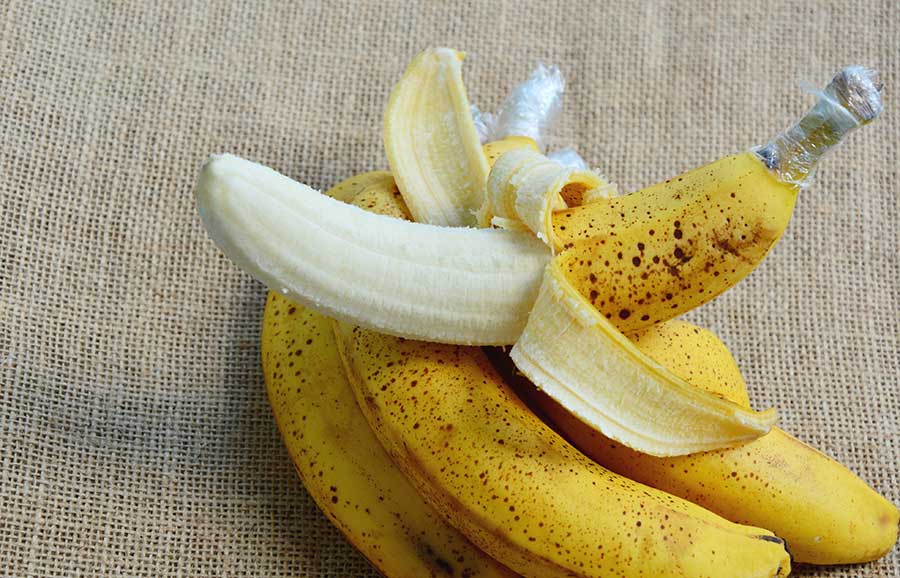
25. Bananas (the Sequel)
It only takes one bad banana to set the whole fruit bowl into decaying disarray. Bananas past their prime can be frozen whole (in their skins) and used for future banana cakes, or slice them up and freeze for smoothies. You won’t throw another bruised lunch box banana out again!
26. Grapes
If the grapes have been picked over and the remains are looking a little sad, freeze them for nifty WINE ICE CUBES. Unlike traditional ice cubes, they won’t water down your glass of moscato, they’re merely returning to the mothership.
27. Coconut Milk and Coconut Cream
You CAN freeze coconut milk and coconut cream. Next time a recipe calls for just half a tin, pour the rest into an ice cube tray, freeze for a few hours and then pop them out into a ziplock bag. Your future self will THANK YOU.
28. Cream and Yoghurt
Legend has it that if you store opened cream and yoghurt upside down in the fridge, a vacuum-like seal is created which helps stop bacteria from forming. Of course, the kind of lid you have on these containers needs to be considered – no one wants to clean up an epic cream spill.
29. Deli and Sandwich Meat
Tempting as it is to leave deli meats wrapped up in their paper parcels, take them out to avoid that gel-like film from forming. Sandwich meat is best kept in an airtight container with paper towel at the base and eaten within 3 to 5 days.
30. Bacon
If you buy bulk bacon, take some time to ROLL those rashers, storing them between layers of Glad Go-Between in an airtight container and pop in the freezer. It’s super easy to get a few rashers out as needed instead of chiselling into a block of frozen meat.
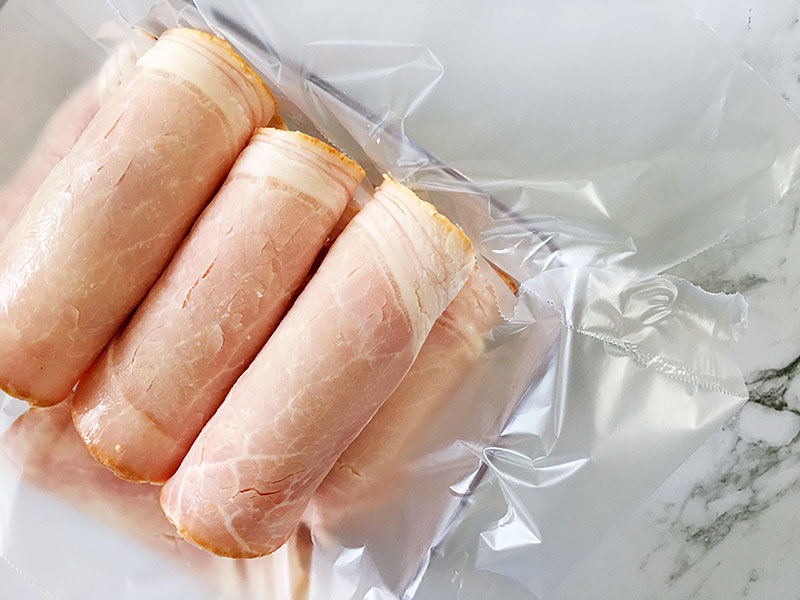
31. Freezer Tips 101
There’s two ALL IMPORTANT factors in successful freezing and defrosting – have the right equipment for the job and know how long you can safely freeze for without compromising taste or texture.
Arm yourself with good quality food wrapping and airtight freezer food storage containers (Pyrex, Sistema, Decor) and you’re well on your way to upping your storing and defrosting game.
- Mince meat and sausages can be frozen for up to 3 months
- Soups and stocks up to six months
- Whole roasts (lamb legs, chickens), raw vegetables and fruits can be frozen for a whole year!
32. Freezer Burn is the Enemy
Speaking of the freezer, the number one bugbear of freezing foods is freezer burn. Freezer burn is what occurs when foods are exposed to air, icicles form, foods texture changes and discolours. The easiest way to avoid this is to vacuum seal as much as you can. Either use a machine or wrap the meat directly in plastic wrap and store in an airtight bag or container – don’t leave them in their plastic packaging!
The fresh food people by name and nature, Woolworths is committed to helping families avoid food wastage by making the very most of their shopping trolley contents week in, week out, making food go that little bit further. Have your own top tip or pantry hack? Feel free to share it below!
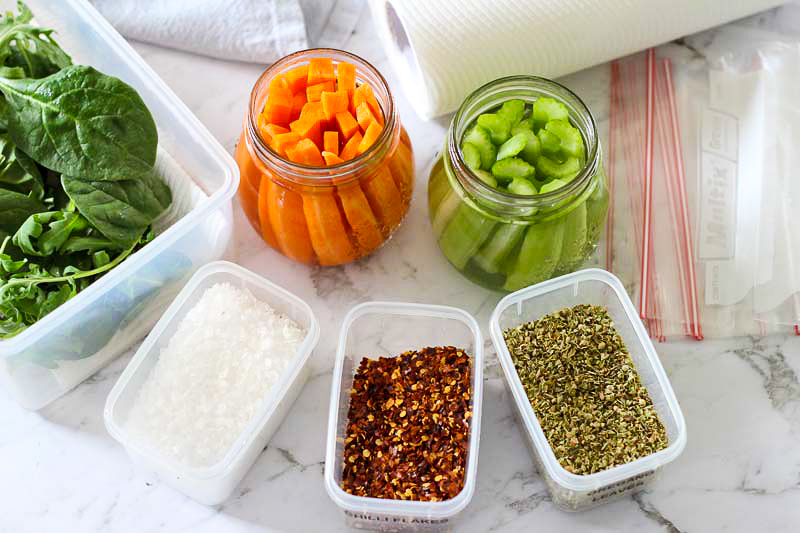
This is a sponsored article for Woolworths.




